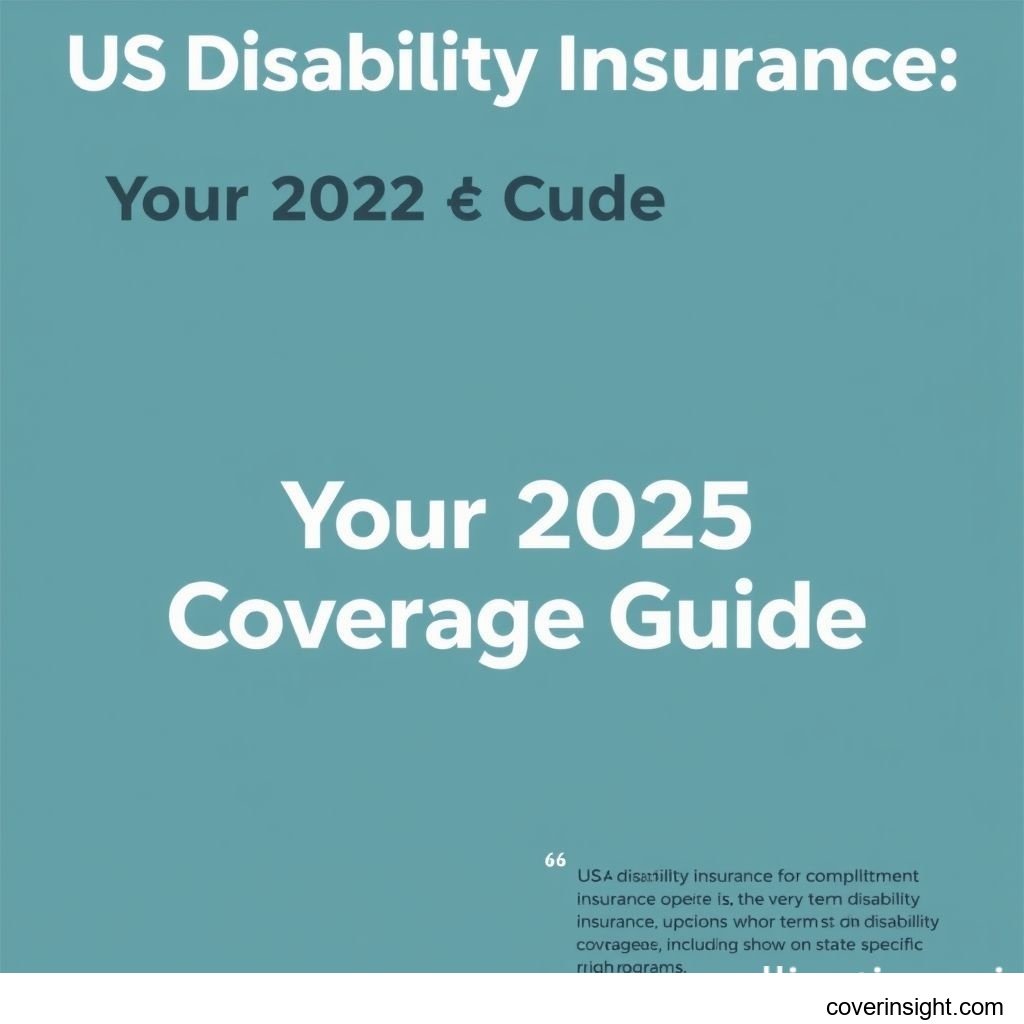Introduction
Navigating the landscape of financial protection is crucial, and in the United States, disability insurance stands as a vital safeguard against unforeseen income loss. For 2025, understanding the nuances of short term vs long term disability insurance is more important than ever. These insurance types offer a critical safety net, providing a portion of your income if you become unable to work due to illness or injury. While both aim to protect your financial stability during a period of non-work, they differ significantly in their coverage duration, waiting periods, and the specific situations they address. This comprehensive guide will illuminate the distinctions, help you assess your needs, and prepare for securing the right coverage in the coming year.
Understanding Short Term vs Long Term Disability Insurance
The fundamental difference between short term vs long term disability insurance lies in the duration of benefits and the waiting period before they begin. Both are designed to replace a portion of your income, but they cater to different lengths of incapacitation.
Short Term Disability Insurance Explained
Short term disability insurance is designed for temporary incapacitations. It provides income replacement for a limited period, typically ranging from a few weeks up to two years. The primary purpose is to cover situations where you might be out of work for a relatively brief time, such as recovery from surgery, a complicated pregnancy, or a short-term illness.
Key characteristics include:
-
Benefit Period: Usually 3-6 months, though some policies may extend up to 12 or 24 months.
-
Elimination Period (Waiting Period): Often 0-14 days. This is the time you must be disabled before benefits begin. For accident-related disabilities, it can be immediate. For illness, it might be longer.
-
Benefit Amount: Typically replaces 40-70% of your pre-tax income.
-
Coverage Source: Often offered by employers as an employee benefit, but individual policies are also available.
Long Term Disability Insurance Explained
Long term disability insurance, on the other hand, is built for more severe or prolonged incapacitations. It kicks in after short-term benefits expire or after a longer waiting period, providing income replacement for years, often until retirement age, or until you recover. It's crucial for protecting against life-altering events like chronic illnesses, severe accidents, or debilitating conditions.
Defining features include:
-
Benefit Period: Can last for 2, 5, 10 years, or even up to age 65 or 67 (retirement age).
-
Elimination Period (Waiting Period): Usually much longer than short-term, ranging from 30, 60, 90, or 180 days, and sometimes up to a year. This period ensures that only genuinely long-term disabilities are covered.
-
Benefit Amount: Generally replaces 50-70% of your pre-tax income.
-
Coverage Source: Can be employer-provided, but individual policies are highly recommended for more robust and personalized coverage.
For a deeper dive into general insurance concepts, you might explore resources like Insurance Resources Global.
Coverage Details
Understanding what's included and excluded in your disability insurance policy is vital, whether you're evaluating short term vs long term disability insurance. Policy terms can vary significantly between providers and specific plans.
What’s Included
Disability insurance policies are primarily designed to replace a portion of your lost income. However, beyond the basic income benefit, many policies offer additional features:
-
Income Replacement: The core benefit, providing a percentage of your pre-disability earnings.
-
Partial Disability Benefits: Some policies pay benefits if you can work part-time but are still limited by your disability. This supports a gradual return to work.
-
Rehabilitation Benefits: Financial support for rehabilitation programs, vocational training, or other services aimed at helping you return to work.
-
Cost-of-Living Adjustment (COLA) Rider: An optional rider that increases your benefit payments over time to account for inflation, helping your purchasing power remain stable during a long-term disability.
-
Future Increase Option (FIO) Rider: Allows you to increase your coverage amount later in life, without further medical underwriting, as your income grows.
-
Recurrent Disability Clause: Prevents you from having to satisfy a new waiting period if your disability recurs within a certain timeframe after you've returned to work.
Common Exclusions
While comprehensive, no insurance policy covers every scenario. Common exclusions in short term vs long term disability insurance policies include:
-
Pre-existing Conditions: Disabilities caused by a condition you had before the policy's effective date, especially if it was not disclosed or within a specified look-back period.
-
Self-Inflicted Injuries: Injuries resulting from suicide attempts or intentional self-harm.
-
War or Acts of War: Disabilities arising from declared or undeclared war.
-
Normal Pregnancy: While complications of pregnancy may be covered by short-term policies, normal, uncomplicated pregnancy and childbirth typically are not, unless the policy explicitly states maternity leave benefits.
-
Criminal Activity: Disabilities sustained while committing a felony or participating in illegal activities.
-
Certain High-Risk Activities: Some policies exclude disabilities resulting from participation in extremely dangerous sports or activities (e.g., professional racing, skydiving), unless a specific rider is purchased.
Cost Analysis for Disability Insurance
The cost of disability insurance can vary significantly. Factors ranging from personal health to the specifics of your chosen policy influence premiums. When comparing short term vs long term disability insurance options, it's crucial to understand what drives these costs.
Price Factors
Several key elements determine the premium you'll pay for disability insurance:
-
Age: Younger individuals typically pay lower premiums as they are statistically less likely to become disabled.
-
Health: Your current health, medical history, and pre-existing conditions play a significant role. A clean bill of health often translates to lower costs.
-
Occupation: Your job's risk level is a major factor. Office workers generally pay less than those in physically demanding or dangerous professions.
-
Benefit Amount: The higher the percentage of your income you want to replace, the higher the premium.
-
Benefit Period: For long-term policies, the longer the period you wish to receive benefits (e.g., to age 65 vs. 5 years), the higher the cost.
-
Elimination Period (Waiting Period Options): This is a critical factor. Shorter waiting periods mean higher premiums, as the insurer starts paying benefits sooner. Choosing a longer waiting period (e.g., 90 or 180 days instead of 30 days) can significantly reduce your premium.
-
Riders: Any additional riders or features added to your policy (like COLA or FIO) will increase the premium.
-
Gender: Historically, women sometimes pay higher premiums for individual policies due to higher claims rates related to certain conditions and maternity leave, although unisex rates are available from some providers.
Saving Tips
Reducing the cost of your disability insurance while maintaining adequate coverage is achievable with a few strategies:
-
Choose a Longer Waiting Period: As mentioned, extending your waiting period options can substantially lower your premiums. If you have an emergency fund that can cover 3-6 months of expenses, a 90 or 180-day waiting period might be a smart financial choice.
-
Opt for Group Coverage: If available through your employer, group short term vs long term disability insurance is often much cheaper than individual policies because the risk is spread across many employees. While potentially less customizable, it's a cost-effective baseline.
-
Maintain Good Health: A healthy lifestyle can lead to lower premiums. Quitting smoking or managing chronic conditions can positively impact your rates over time.
-
Shop Around: Obtain quotes from multiple insurance providers. Prices can vary significantly for comparable coverage. Online tools and independent agents can help with this.
-
Adjust Benefit Amount: While you want adequate coverage, ensure you're not over-insuring. Consider what percentage of your income you truly need to maintain your lifestyle during a disability.
-
Bundle Policies: Some insurers offer discounts if you bundle disability insurance with other policies like life insurance.
Choosing Your Coverage: Waiting Period Options and More
Selecting the right disability insurance involves more than just picking between short term vs long term disability insurance. It requires a detailed assessment of your financial situation, risk tolerance, and specific policy features like waiting period options. For general US insurance information, you can visit US Insurance Home.
Key Considerations
When building your disability insurance strategy for 2025, ponder these crucial aspects:
-
Definition of Disability (Own-Occupation vs. Any-Occupation):
-
Own-Occupation: This is the most desirable definition, meaning you're considered disabled if you cannot perform the duties of your specific occupation, even if you could do a different job.
-
Any-Occupation: This is a stricter definition, meaning you're only considered disabled if you cannot perform the duties of any occupation for which you are reasonably suited by education, training, or experience. Own-occupation is more expensive but offers superior protection.
-
-
Benefit Period: How long do you need the income replacement to last? Align this with your financial goals and potential duration of disability.
-
Benefit Amount: What percentage of your income do you need to cover essential expenses? Most policies cover 50-70%.
-
Riders and Customization: Consider additional riders like inflation protection (COLA), future increase options (FIO), or a catastrophic disability rider for severe situations.
-
Coordination with Other Benefits: How will your disability insurance integrate with Social Security Disability Insurance (SSDI), workers' compensation, or employer-sponsored sick leave?
-
Insurer Stability: Choose a reputable insurer with strong financial ratings. Resources like the National Association of Insurance Commissioners can provide valuable information on state regulations and insurer data. You can also find your State Insurance Departments for specific guidance.
Using a Disability Insurance Calculator
A disability insurance calculator is an invaluable tool in your decision-making process. These online tools help you estimate how much coverage you might need and what your premiums could be, based on your individual circumstances.
Here's how a disability insurance calculator can assist you:
-
Needs Assessment: By inputting your income, expenses, savings, and other financial data, a disability insurance calculator helps determine the appropriate benefit amount. It ensures you're not under-insured, leaving you vulnerable, or over-insured, leading to unnecessary premium costs.
-
Premium Estimation: Most calculators provide an estimate of your monthly or annual premium based on factors like your age, health, occupation, desired benefit amount, and chosen waiting period options.
-
Scenario Planning: You can often adjust variables, such as the benefit period or waiting period, to see how these changes impact your estimated premium and overall coverage. This helps you balance affordability with comprehensive protection.
-
Comparison Shopping: While a single calculator won't give you exact quotes from all providers, it provides a solid baseline for comparison when you start contacting insurers.
Utilizing a disability insurance calculator empowers you to make informed decisions tailored to your personal and financial situation, ensuring you select the optimal short term vs long term disability insurance plan for 2025.
FAQs
Here are some frequently asked questions about short term vs long term disability insurance in the US for 2025.
How much does short term vs long term disability insurance cost?
The cost varies significantly. For individual policies, annual premiums can range from 1% to 3% of your gross annual income. For example, if you earn $60,000 annually, your premium might be $600-$1,800 per year. Employer-sponsored group plans are often much cheaper or even free for employees, though they may offer less robust coverage than individual policies. Factors like age, health, occupation, benefit amount, and selected waiting period options heavily influence the price.
What affects premiums?
Premiums are primarily affected by:
-
Age and Health: Younger, healthier individuals pay less.
-
Occupation: Higher-risk jobs lead to higher premiums.
-
Benefit Amount and Period: More coverage and longer benefit durations increase cost.
-
Elimination (Waiting) Period: Shorter waiting periods lead to higher premiums.
-
Policy Riders: Additional features like inflation protection add to the cost.
Is it mandatory?
In most of the US, short term vs long term disability insurance is not mandatory for individuals or employers. However, a few states (California, Hawaii, New Jersey, New York, Rhode Island, and Puerto Rico) have mandatory state-run short-term disability programs. Even in these states, the benefits may be limited, and many individuals choose to supplement with private coverage. While not legally mandated for most, it is highly recommended for financial security.
How to choose?
To choose between short term vs long term disability insurance, or a combination of both:
-
Assess Your Savings: If you have an emergency fund covering 3-6 months of expenses, you might opt for a longer waiting period options on a long-term policy to save on premiums.
-
Evaluate Employer Coverage: See what your employer provides. Often, they offer short-term or a basic long-term policy.
-
Determine Your Needs: Use a disability insurance calculator to determine the income replacement level you'd need to maintain your lifestyle.
-
Consider Your Occupation and Health: These influence risk and cost.
-
Compare Quotes: Shop around from various providers for the best rates and terms.
Consequences of no coverage?
Without short term vs long term disability insurance, the financial consequences of an incapacitating illness or injury can be severe:
-
Income Loss: You would have no regular income if you couldn't work.
-
Debt Accumulation: Medical bills combined with living expenses could lead to significant debt.
-
Depleted Savings: Your emergency fund, retirement savings, or other assets might be quickly exhausted.
-
Foreclosure/Bankruptcy: In extreme cases, extended disability without income protection can lead to loss of home and financial ruin.
-
Reliance on Social Security: Social Security Disability Insurance (SSDI) has strict eligibility requirements, long waiting periods, and often provides modest benefits, making it an insufficient sole safety net for many. For more information on health-related financial planning, you can explore resources like Healthcare.gov.








Comments